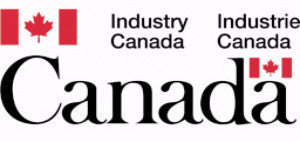Industry Canada Resource Road Frequencies
Presently there are over 650,000 km’s of resource roads in British Columbia. Often resource roads
utilize a radio channel to assist the safe flow of traffic. Industry Canada has been working with its
partners to develop a standardized bank of radio channels that have been tested in two pilot areas.
Final changes have been made to the resource road standardized radio channels.
Resource Roads and Mobile Radio Use in British Columbia Mobile (two-way) radios are in use on resource roads throughout British Columbia. In industrial vehicles, mobile radios are used by workers to communicate location and direction of travel to enhance safety. It is important to know that most resource roads in BC are not “radio controlled” but “radio assisted”. On radio controlled roads, all vehicles would be expected to have and use mobile radios, and drivers would rely more heavily on communications of location and direction. In the case of radio assisted roads, radios are generally not mandatory and should not be relied upon exclusively. The Ministry of Forests, Lands and Natural Resource Operations, in collaboration with Industry Canada, has embarked on a project to establish simplified and uniform mobile radio communications for resource roads. Many areas of the province have or are in the process of transition to a consistent approach including a standardized set of Resource Road (RR) channels. Not all areas or roads have converted to the standard approach including the RR channels. More information on the Resource Road Communications Project can be obtained through this link: https://www.for.gov.bc.ca/hth/engineering/Road_Radio_Project.htm The instructions below are provided to assist those using mobile radios on radio assisted resource roads: 1. Ensure that you have a mobile radio that is installed and functioning correctly 2. Have the required frequencies and channels for the area that you intend on travelling preprogrammed into your radio by a commercial radio shop Programming radios in the field is illegal and is not recommended It is recommended to obtain the full bank of standard RR channels, in their standard configuration, when having radios programmed 3. Know how to use your radio 4. Observe and follow posted radio communications protocols including identifying and using the right channel for the road you are travelling on 5. Do a radio check to ensure that your radio is working and that you are on the correct channel 6. Only use the radio for communicating location and direction, for communicating hazards to other drivers, or in the case of emergencies – do not carry on conversations, or chat 7. Stay on the designated road channel at all times while traveling, do not use scan mode 8. Do not interrupt other callers 9. Call when: starting, stopping, entering or leaving a road; and at must call signs 10. If there are no posted communication protocols use the following default call protocols: Call in order of: 1. Road name 2. Km location 3. “Up” or “Down” every two kilometres o Call “Up” at even km boards when travelling in direction of increasing km signs (eg. 0, 2, 4, 6, …) o Call “Down” at odd km boards when traveling in direction of decreasing km signs (eg. ..., 7, 5,3,1) example: “Sukunka, 10 kilometre, up” All drivers should drive safely according to road and weather conditions at all times.

